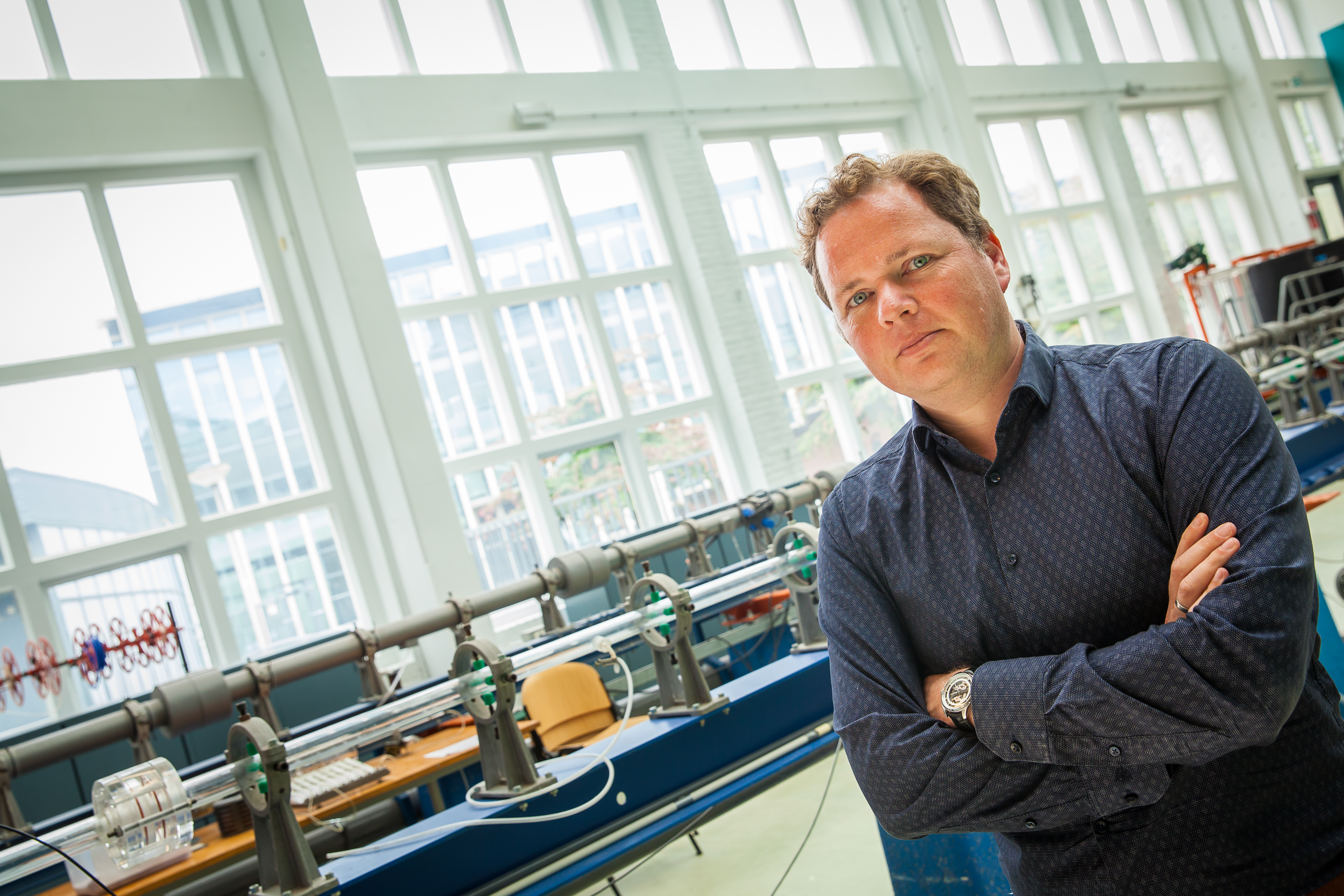Professor Christian Poelma’s inaugural speech: ‘Opaque Flows Clarified’
On Friday 16 February 2018, Christian Poelma, professor of multiphase systems at the Department of Process & Energy, will deliver his inaugural speech ‘Opaque Flows Clarified’’. The speech (in Dutch) will begin at 3 PM in TU Delft’s Aula.
Christian Poelma is an expert in the field of the interaction between flows and particles or droplets and is known for his advanced measurement techniques to characterize these flows. Based on the generated data, models can be formulated that provide sustainable solutions for challenges from nature and industry. The research by Poelma covers (applied) multiphase flows, cardiovascular flows and flow measurement techniques.
Opaque Flows Clarified
Flows are everywhere around us. Both in nature and industry flows often involve multiple phases (gas, liquid or solid). This can be a wave on a water surface, but often there is a continuous phase that contains small droplets, bubbles or solid particles. Examples of these so-called dispersed multiphase flows are sand in rivers, oil droplets in contaminated water, catalyst particles in chemical reactors, or red blood cells in blood. Being able to predict these flows is essential for more efficient and sustainable production processes, such as the processing of raw materials, food production or the production of energy.
While we know the exact equations that describe these flows, we cannot solve them analytically. Computer simulations are possible, but demand enormous computational efforts, even for relatively simple problems. The only solution for applied flow studies is therefore a prediction based on simplified models. However, these models lack a solid underpinning, predominantly due to a lack in good experimental data: these flows are difficult to characterize, because they turn opaque even at modest volume loads. Current optical techniques (based on lasers and cameras) will thus no longer work.
By making use of non-optical imaging techniques, generally borrowed from a medical setting, we can see in these opaque flows. For instance, imaging based on ultrasound, magnetic resonance, and X-rays will allow us to determine velocities and concentrations – we can clarify these opaque flows.
Through the study of a number of fundamental flows (such as laminar and turbulent pipe flow), we can unravel the physical mechanisms piece-by-piece. The main goal is to be able to predict the average effect of the countless particles, rather than their individual contributions. With this approach, we can formulate accurate, but efficient models. After validation, these can be used to address the numerous challenges in the field of multiphase flows from society.

